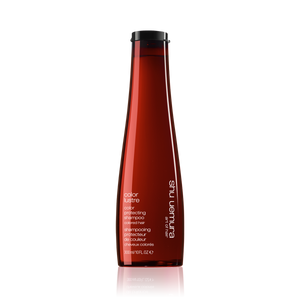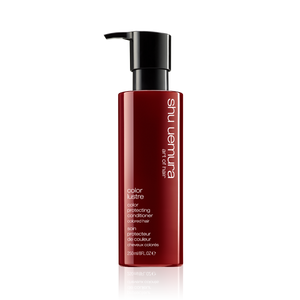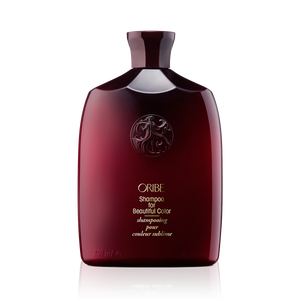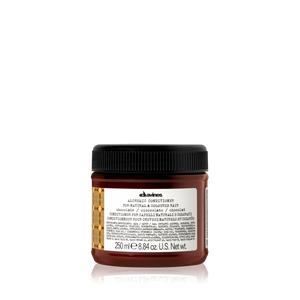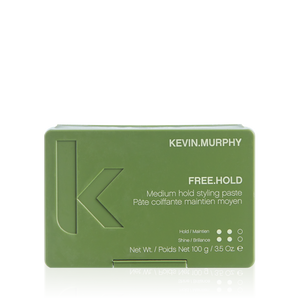Grey blending: the versatile colour technique for men’s hair
When grey hairs start to appear, you've got lots of options.
Maybe you want to let your salt and pepper shine as you transition to a full head of grey hair or perhaps you'd rather disguise those silver strands.
There's no right or wrong when it comes to going grey, but if you're on the fence about whether to cover up those pale speckles, a technique called grey blending might be just what you're looking for.
"For men, grey hair predominantly appears at the sides first and a little bit around the hairline," says Zoe Rodgers, artistic director at Paul Edmonds London.
"Some men don't like it, so we use grey blending to dye the grey hair in those areas and blend it with the natural hair colour, with the colour lasting until they have their next haircut."
It's very popular with gents at the salon, she says: "We have a lot of clients that have grey blending done - and celebrity clients as well."
This isn't a one-size-fits-all approach, however. Grey blending is tailored to the individual, with three main ways that colour is applied.
Here, Zoe discusses the different methods and explains everything you need to know about grey blending…
3 METHODS OF GREY BLENDING
The first type of grey blending is using lowlights. As opposed to highlights, where sections of the hair are lightened, applying lowlights means darkening some or all of the grey hair.
"When you've got a man with a lot of grey hair and he just wants to subtly make it not look as grey, I can add some lowlights," Julie explains.
The next method is comb-on colour, where larger sections are dyed to match the natural hair shade.
"With lowlights you're targeting each individual grey hair, whereas when you're combing the colour on it is more of a heavier paint," Julie says. "As the name suggests, it's applied with a thin-tailed comb all the way through."
Comb-on dye is ideal for covering larger sections of grey: "I've got a couple of clients who are only just going grey and it's predominantly the sides that are really white so once I've cut the hair short it really is noticeable. The comb-on colour blends really well, so they have it done every time they have their hair cut."
The third method of grey blending is balayage, which means applying colour freehand in a sweeping motion, allowing for a more individual approach. The colourist might cover all the grey or leave some visible.
"Balayage is a technique we use a lot on women's hair to lighten it," Julie says. "This is the same technique but with men's hair we use it for grey coverage."
All the grey blending techniques we use in salon are done with semi-permanent colour which washes out gradually.

WHICH TYPE OF GREY BLENDING IS BEST FOR YOU?
At Paul Edmonds, we take a variety of factors into account when deciding which method of grey blending to do.
"Each client is different, so it's up to the colourist as to whether they would do, say, comb-on colour or lowlights," Julie says. "It's about a bespoke approach on a gent - it's got to look effortless and natural."
That's why we recommend coming in for a consultation to chat through your options with your colourist.
Julie continues: "What you need to consider is, how will the colour fade? Will it look natural? How often do you need to have it done? And will people notice? We want it to look as natural as possible."
She will consider the best technique to use to suit a client's base hair colour: "Blonde hair tends to generally blend better as the man goes grey, but with darker-haired men there's a bigger contrast and some men find that ages them."
If you're concerned that adding hair dye to some sections of your hair could look unnatural, Julie points out: "The colours that we use are specifically designed for men because they contain an ash pigment, so what's good is it doesn't go too warm on the hair so it doesn't look 'fake.'"
And remember, grey blending can be done at any age. Zoe has clients from their thirties and up: "When men start going grey they usually just want blending at the sides and front so it might be that I do a few lowlights as opposed to comb-on colour."
HOW OFTEN DO YOU NEED GREY BLENDING?
All three grey blending techniques are done using semi-permanent colour.
"Semi-permanent colour can last up to four to six and then it starts to fade," Zoe says. "Most men have their hair cut about every six weeks if they want to keep their hair short, or every four weeks if they have a skin fade."
That means grey blending can be done at each cut appointment, as long as you've scheduled the extra time with a colourist.
"If it's comb-on colour it's going to only take about 15 minutes to apply then it's about 20 minutes development time before it's washed off," Zoe says.
"On a gent who's having lowlights or balayage, which is a little bit more bespoke, then it's going to take about two and a half or three hours in total."
HOW CAN YOU MAINTAIN THE COLOUR AFTER GREY BLENDING?
While semi-permanent dye used in grey blending is intended to wash out gradually, you can keep the colour looking fresh by using the right hair products at home.
"Colour-protecting shampoo and conditioner are a must because that's going to stop it from fading," Zoe says.
"Men with short hair tend to wear a wax and that's a good idea because that also makes the hair look less grey, it slightly darkens it. I like the Kevin Murphy Free.Hold, it's a really good medium hold wax."
Here are Zoe's key product recommendations for men who have had grey blending…
The perfect blend
Whether you want to disguise your silver speckles completely or just cover up a few, grey blending is a brilliant technique for guys of all ages.
Find out how grey blending could work for you. Book a colour consultation at Paul Edmonds London.

